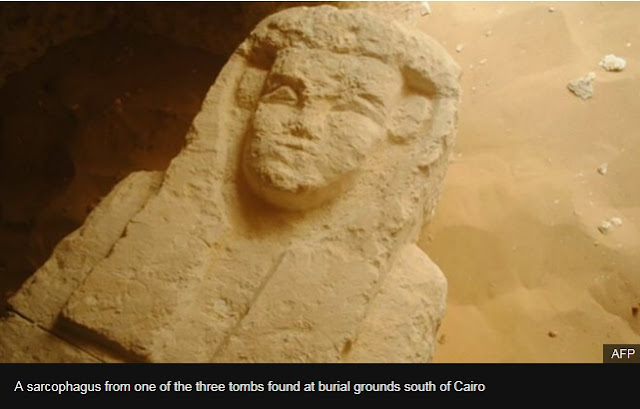Archaeologists have discovered three tombs that date back around 2,000 years in southern Egypt.
They were found in burial grounds in the Al-Kamin al-Sahrawi area in Minya province, south of Cairo.
The tombs contained a collection of different sarcophagi, or stone coffins, as well as clay fragments.
Egypt's antiquities ministry said the discovery "suggests that the area was a great cemetery for a long span of time".
One of the tombs, which was reached through a shaft carved in rock, contained four sarcophagi that had been sculpted to depict a human face.
In another, excavators found six burial holes, including one for the burial of a small child.
Clay fragments found at the site date the tombs between the 27th Dynasty, founded in 525BC, and the Greco-Roman era, which lasted between 332BC and the 4th Century.
Ali al-Bakry, head of the mission, said one of the tombs contained bones believed to be the remains of "men, women and children of different ages".
"These tombs were part of a large cemetery for a large city and not a military garrison as some suggest," he said.
In a statement, the antiquities ministry said that "works are under way in order to reveal more secrets".
This work follows previous excavation at the site, which began in 2015.
Source: BBCNews



No comments:
Post a Comment
Add a Comment...